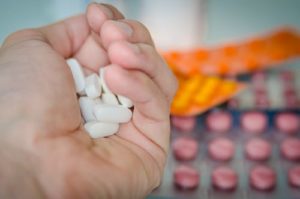 Medicare can be a confusing subject for anyone, including what is known as Part D. So what exactly is Medicare Plan D? In simple terms, it is a prescription drug coverage insurance plan offered by private insurance companies that helps pay for prescription drugs. Since Medicare prescription drug coverage is voluntary, you will need to enroll to be covered.
Medicare can be a confusing subject for anyone, including what is known as Part D. So what exactly is Medicare Plan D? In simple terms, it is a prescription drug coverage insurance plan offered by private insurance companies that helps pay for prescription drugs. Since Medicare prescription drug coverage is voluntary, you will need to enroll to be covered.
Anyone enrolled in Medicare Part A or B (or both) is eligible for Part D coverage. Before enrolling, learn what it covers. When comparing Medicare Part D coverage, check each plans formulary (drug list) to make sure your drugs are included. The federal government sets guidelines for the type of drugs Medicare Part D plans must cover, and each Medicare Part D plan decides which specific drugs it will cover and what members will pay. If you decide to enroll in a Part D plan, you can only do so through private insurance companies.
The amount you pay for your drug plan depends on four factors, beginning with “tier levels” There are five so-called tier levels. In tier 1 are the least expensive drugs, while tier 5 covers the most expensive drugs. So, consider where you are within the drug payment stages, where you purchase your prescription drugs—in network or out of network—and whether you have a federal or state subsidy for drug coverage.
Another important facet of Part D is understanding the Medicare drug payment stages, which fall into one of four: annual deductible stage, initial coverage stage, coverage gap stage, and catastrophic stage. In the annual deductible stage, you pay for your drugs until you reach the deductible amount set by your plan. Not all Part D plans have a deductible. If your plan does not have a deductible, your coverage starts with the first prescription you fill. During the initial coverage stage, you pay a copay or coinsurance and the plan pays the rest. You stay in this stage until your total drug costs reach $3,820. At that point, you’re in the coverage gap stage. In this stage, reached after your total drug costs reach $3,820, you will pay 25% for most brand-name drugs and generic drugs. You stay in this stage until your out-of-pocket costs reach $6,350. If you reach this $6,350 threshold, you’re in what’s known as the catastrophic stage, during which you pay a small copay or coinsurance amount and stay in this stage for the rest of the plan year.
It’s also important to keep in mind that if you enroll in Part D late, you may pay a penalty. This is an additional amount charged by Medicare that will be added to you Part D premium if you go without Part D coverage for longer than 63 days in a row after you are eligible for Medicare.
So, before selecting a Part D Plan, keep this simple checklist in mind:
- Does the plan cover my prescription drugs? Make a list of the drugs you take.
- Which plan will be most cost effective? When comparing plans be sure to consider all costs, including premiums, copays, deductibles and tier levels.
- Are you willing to fill your prescriptions in the preferred pharmacy network? Using a preferred pharmacy network helps ensure you are getting the lowest drug costs.
Angela Asadi is a licensed agent specializing in Medicare Plans. You can reach her at Asadiangela@gmail.com.







